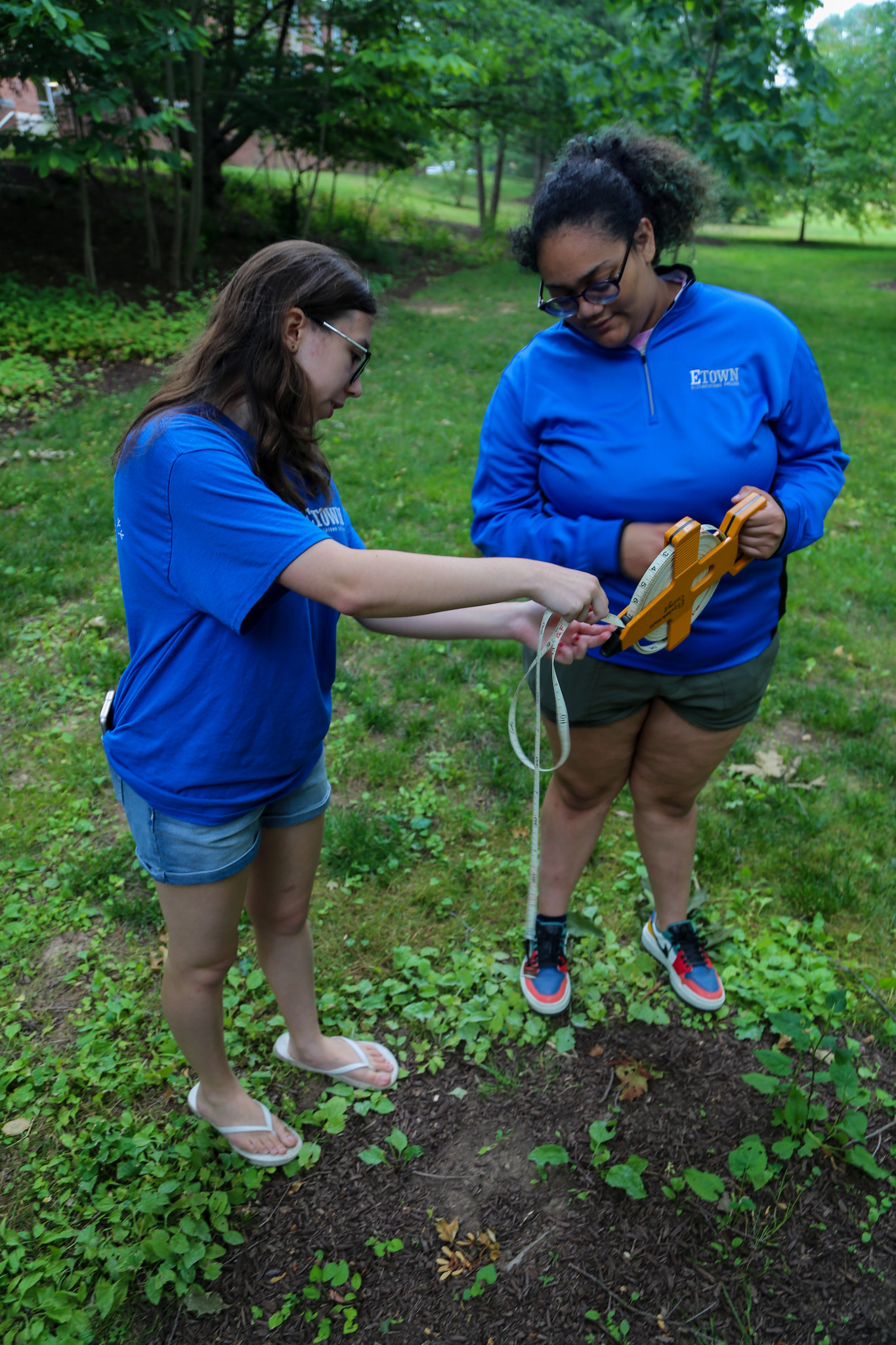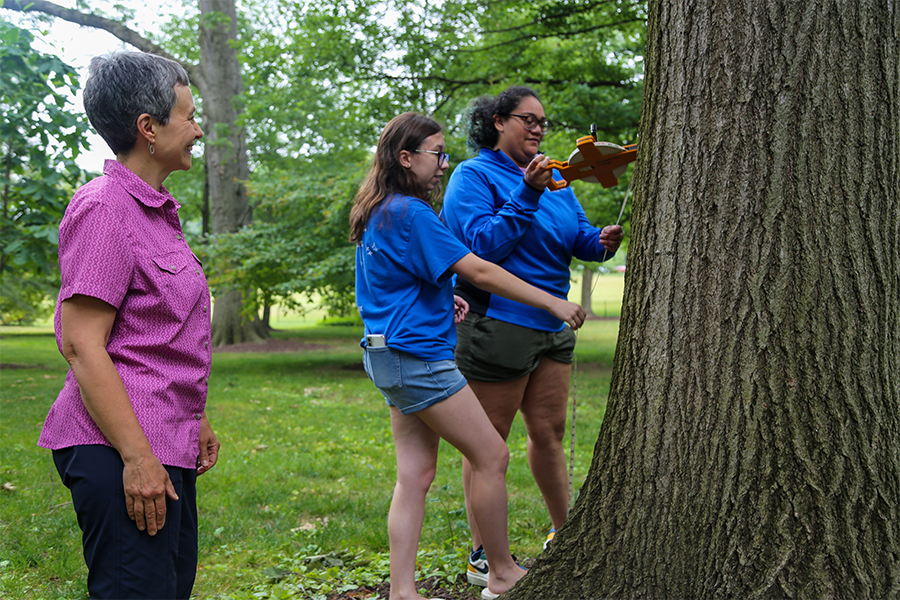Environmental Science major Juriel Diaz ’26 and Biology major Kira Koutsouftikis ’26 are working on campus this summer with faculty mentors, Professor of Biology Dr. Diane Bridge, and Director of Prestigious Scholarships and Public Heritage Studies Jean-Paul Benowitz on a set of resources to make it easier for members of the campus community and surrounding communities to learn about the biology, ecological roles, and cultural significance of selected trees on the Elizabethtown College campus as part of the Summer Creative Arts and Research Program (SCARP).
In this project, Diaz and Koutsouftikis have created virtual tours, unique activities, and text for proposed signs. The end results from this project will be used in future classes, SEEDS Ecology Club activities, and tours available for local community members as part of the Earth 2 E-town Earth Day festival. Their work also has the potential to serve as the basis for the College’s application for the Arboretum Accreditation Program through ArbNet.
Title of Research
Making Campus Trees Visible: Creating Resources to Enable Students and the Surrounding Communities to Benefit from Trees of the Elizabethtown Campus
Student Researchers
Juriel Diaz ’26 (Environmental Science major)
Kira Koutsouftikis ’26 (Biology major)
Faculty Mentors
Dr. Diane Bridge, Professor of Biology
Jean-Paul Benowitz, Director of Prestigious Scholarships and Public Heritage Studies
What are you researching?
Diaz: We’re creating an application for the campus to become an arboretum to highlight our native trees. This includes mapping them and planning activities.
Koutsouftikis: We found a set of trees that we wanted to highlight on campus and created tours and activities to help bring awareness to the greenery on campus.
Why did you choose this topic?
Diaz: Native trees are ecologically important and often have a strong cultural importance as well. Highlighting them showcases this value.
Koutsouftikis: We chose this topic because we want people to be more aware of the environment on campus. Without the trees on campus, there wouldn’t be shade or homes for the cute birds and chipmunks around. Bringing the nature aspect of campus forward will hopefully make people more aware of what is occurring around them and possibly the environmental issues that are occurring worldwide as well.
What is the most interesting aspect of this research?
Diaz: The most interesting aspect of this research is the ecological and cultural impact of native trees.
Koutsouftikis: The most interesting part of this research was learning new skills that I didn’t even realize would be involved in my field of interest. I never realized how much went into a project like this. I had to learn how to use certain programs, different ways to measure trees, how to map trees, and just overall how to make a cohesive project.
How have your faculty mentors helped you?
Diaz: Dr. Bridge and Dr. Benowitz have been crucial in networking and research for this project.
Koutsouftikis: Dr. Bridge is fantastic. Every time there was a problem or a small hiccup, she was there to help plan a meeting with someone to help fix it or she would just fix it herself. She provided us with so many opportunities to learn and genuinely wanted us to enjoy our time while we learned about campus and the community around us. I felt like everything she would plan for us was fun and intellectually stimulating. She was there every step of the way, and I can’t thank her enough for that.
Hear from the faculty mentor – Dr. Diane Bridge
“I really enjoy getting the chance to work with students full-time on a specific project,” Bridge said. “SCARP gives faculty the chance to focus on one project at a time when we don’t have classes to think about, so students can engage deeply with the project and have the experience of making progress quickly. Jay and Kira did a wonderful job this summer. They came up with very interesting, original ideas. We also got a chance to go on a tour highlighting innovative green infrastructure projects in Lancaster and to meet some of the people involved in planning and implementing these projects.”

